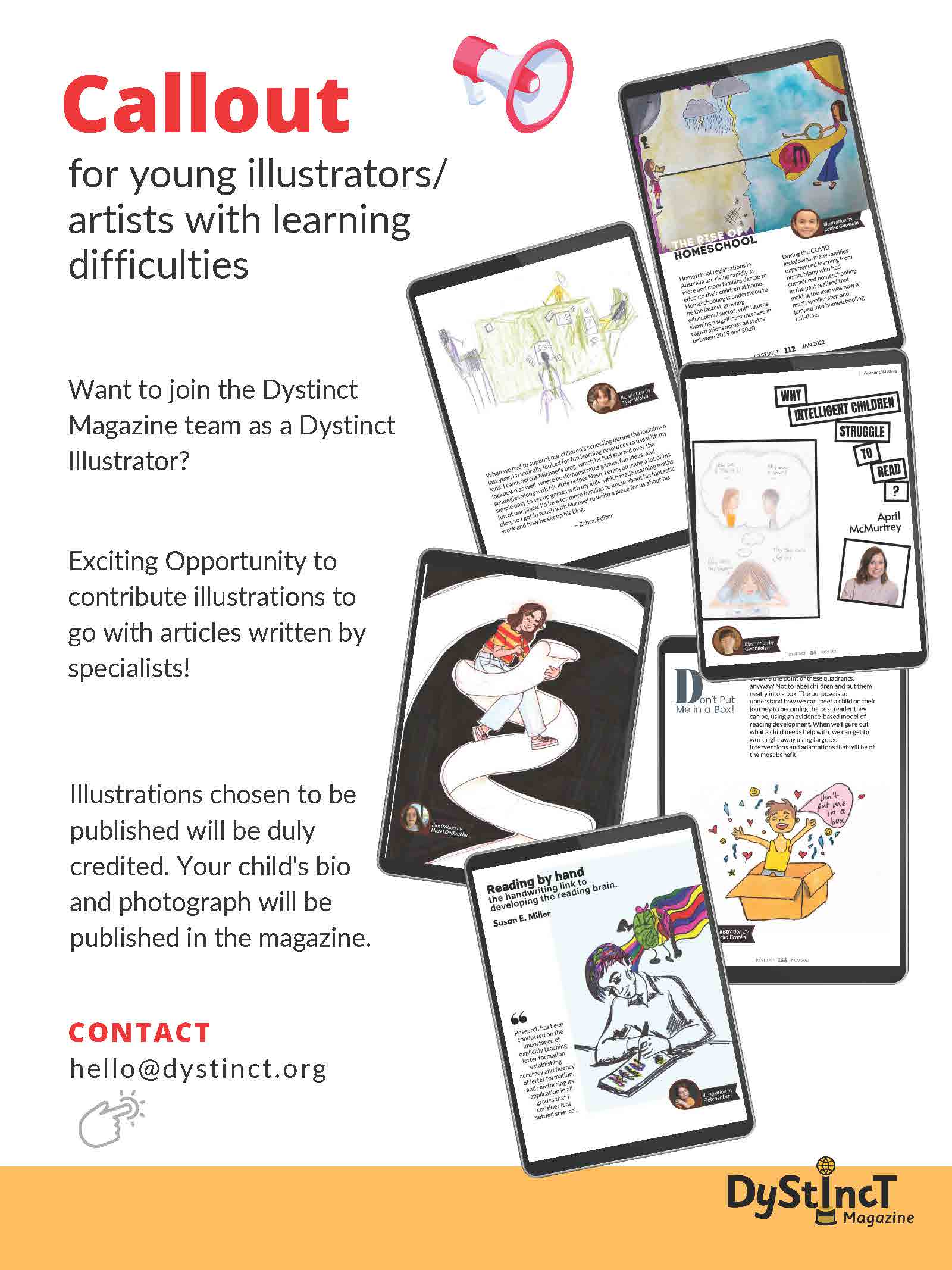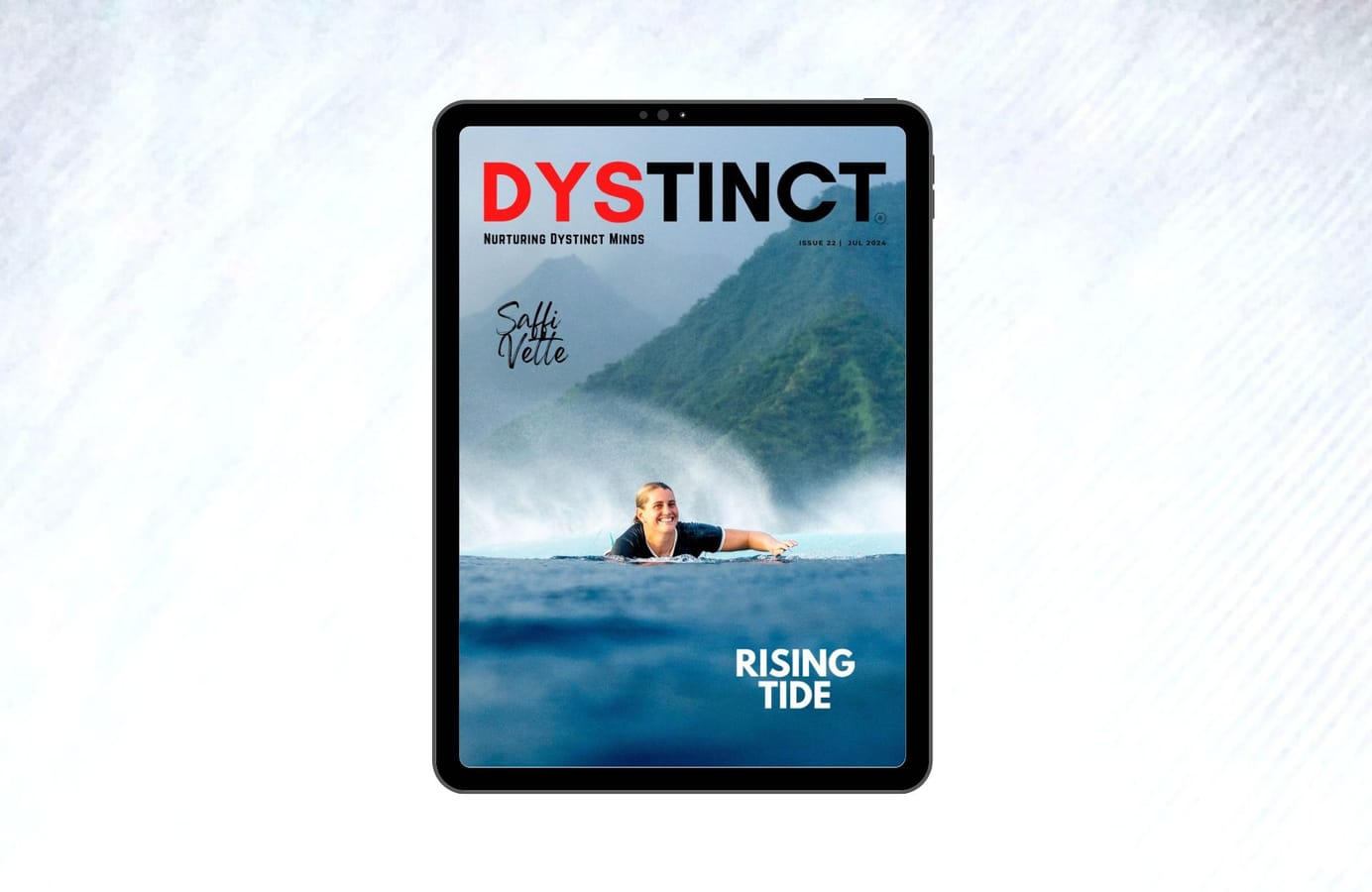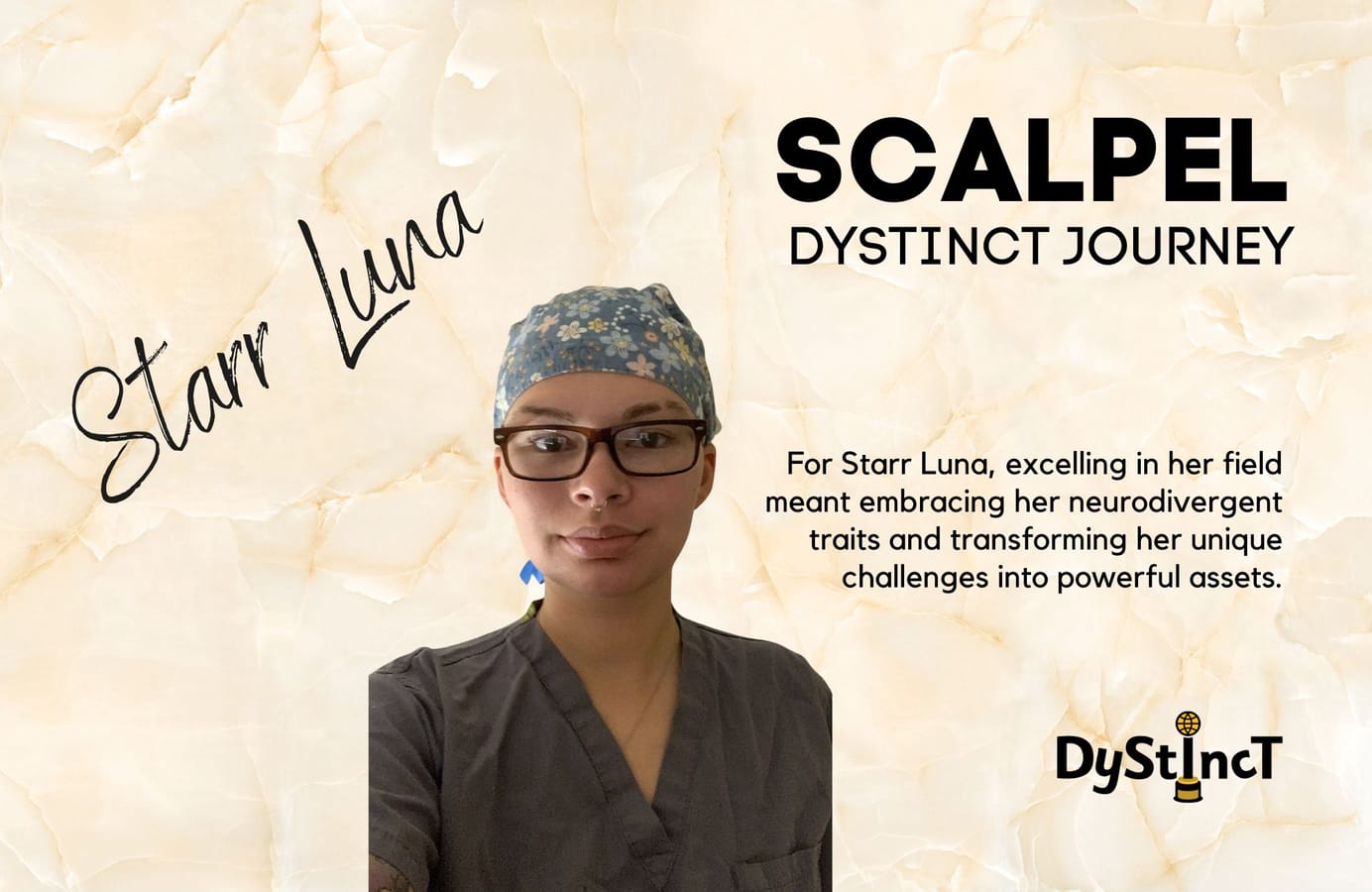
Issue 19: The Gift of Learning How to Learn | Hayden Miskinis
Hayden Miskinis shares her journey as a dyslexic learner and ballet dancer, highlighting how the structured approach to overcoming dyslexia has informed her teaching of dance to young children and led her to advocate for effective learning methods while finding solace in the art of ballet.
Table of Contents
It is 10 am on Sunday morning. I walk into the sun-lit ballet studio, and soon the only thoughts in my head are,
Are my feet pointed?
Are my arms in the right place?
Am I dancing like I really care?
The repetition of plies and tendus calms my anxious mind. I cancel out all of the other thoughts of worry, stress, and anxiety. I am here to dance.
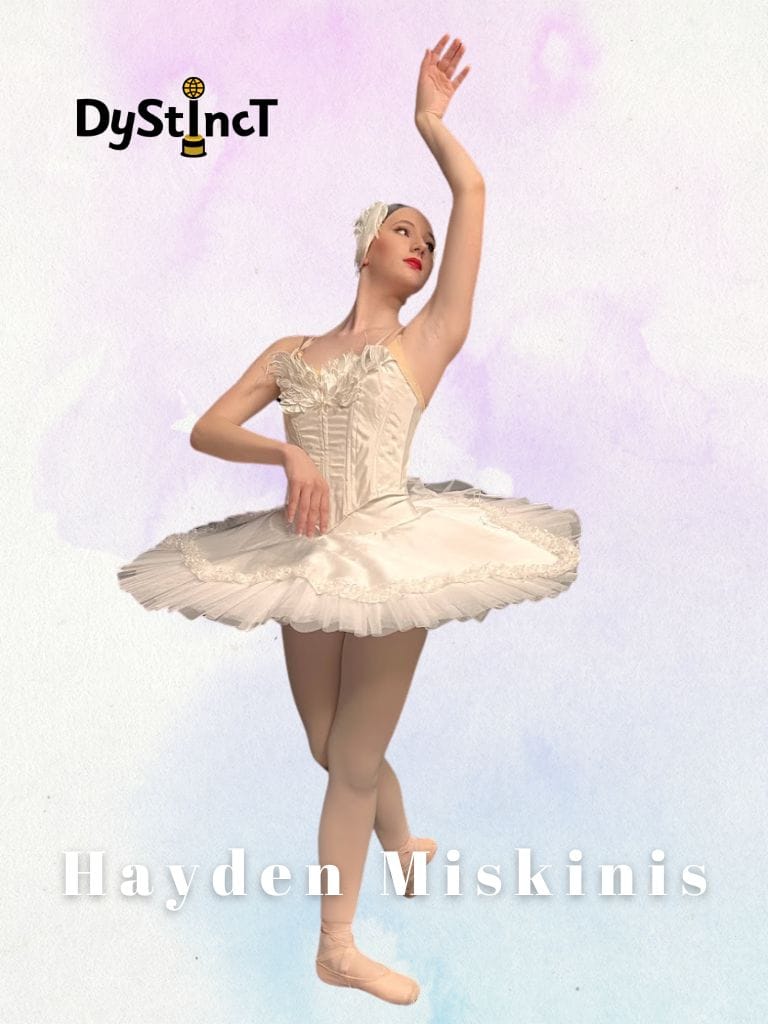
Dance has been my refuge for as long as I can remember. I started dancing when I was two. Five years later, when I was in third grade, I found out I was dyslexic. As a third grader, I did not know what it meant. All I knew was that now I had to be pulled out of my class at random times and write “cat” 100 times. Now, I had to go from school to another program to teach me how to read for two extra hours twice a week every week for two years. I did not know what my diagnosis of dyslexia meant at the time, but later on, I would learn that it made me a strong and hardworking learner. This characteristic not only helped me throughout school but also in ballet.
The process of teaching a dyslexic learner to read is extensive and uses repetition. I worked with a specialist trained in Orton-Gillingham, and each of my reading sections was structured the same. I would go through sound flashcards, write words on the whiteboard, read words on the whiteboard, and learn new strategies and words. Two days every week, I would go through this process over and over again until I was able to retain all of the information.
The process of teaching a person ballet is very similar. A ballet class is also always structured the same way. We start with barre exercises, then adagio, petite allegro and last grande allegro. Students will repeat this process every class until it is muscle memory. Learning the process that best teaches my brain how to read also helped teach me how I most effectively learn how to dance. Learning to read as someone with dyslexia has not only taught me how to read but also how to learn and, over time, how to teach.
I now understand how children’s minds learn because, in recent years, I have started teaching dance to little kids. I now know that having a child memorize choreography without knowing the details of each step will not help them to learn and will most likely turn the dance into a hot mess. And yet, this is how my school, and many other schools are teaching children how to read. They are having students memorize words without knowing and understanding how each of the letters make up the word. As soon as I realized this philosophy, I knew that I had to start to speak up and be a voice for other dyslexic learners.
Starting as young as nine years old, I began to speak in my community about the importance of understanding dyslexic youth. I have spoken at school boards and conferences, and I have met with young students who have just found out that they are dyslexic. When I was struggling in school, I never heard anyone speak about dyslexia, especially not another student; this is why I knew what I was doing was so important. Keeping up with school and advocating takes time, but throughout my reading and advocacy journey, I never stopped dancing. Because when I am dancing, I am at peace.
When I was struggling in school, I never heard anyone speak about dyslexia, especially not another student; this is why I knew what I was doing was so important.
The biggest gift dyslexia has given me is a strong work ethic and the ability to know how to learn.
Ballet allows me to distract myself from my chaotic world. Ballet makes it so that I do not have to talk, read, or write but instead feel my emotions through the movements that I create. Over the fourteen years that I have danced, I have, at times, felt frustrated and stressed. But, when my life gets overwhelming, I know that the studio is my safe space. I now know that ballet is one of the only things that can silence my mind.
“Why do you dance?” I am often asked. I dance when I do not know what else to do. I dance when the world feels heavy. I dance because it is where I can process every emotion, big or small. And for this, I will be forever grateful for the gift of ballet.
People talk about the “gift of dyslexia”, and while dyslexia has brought challenges, the biggest gift it has given me is a strong work ethic and the ability to know how to learn. I have not only learned how to read and how to dance, I have learned the gift of knowledge. I am excited to pass that gift on to the next generation of dancers and learners.
Hayden Miskinis
Hayden Miskinis
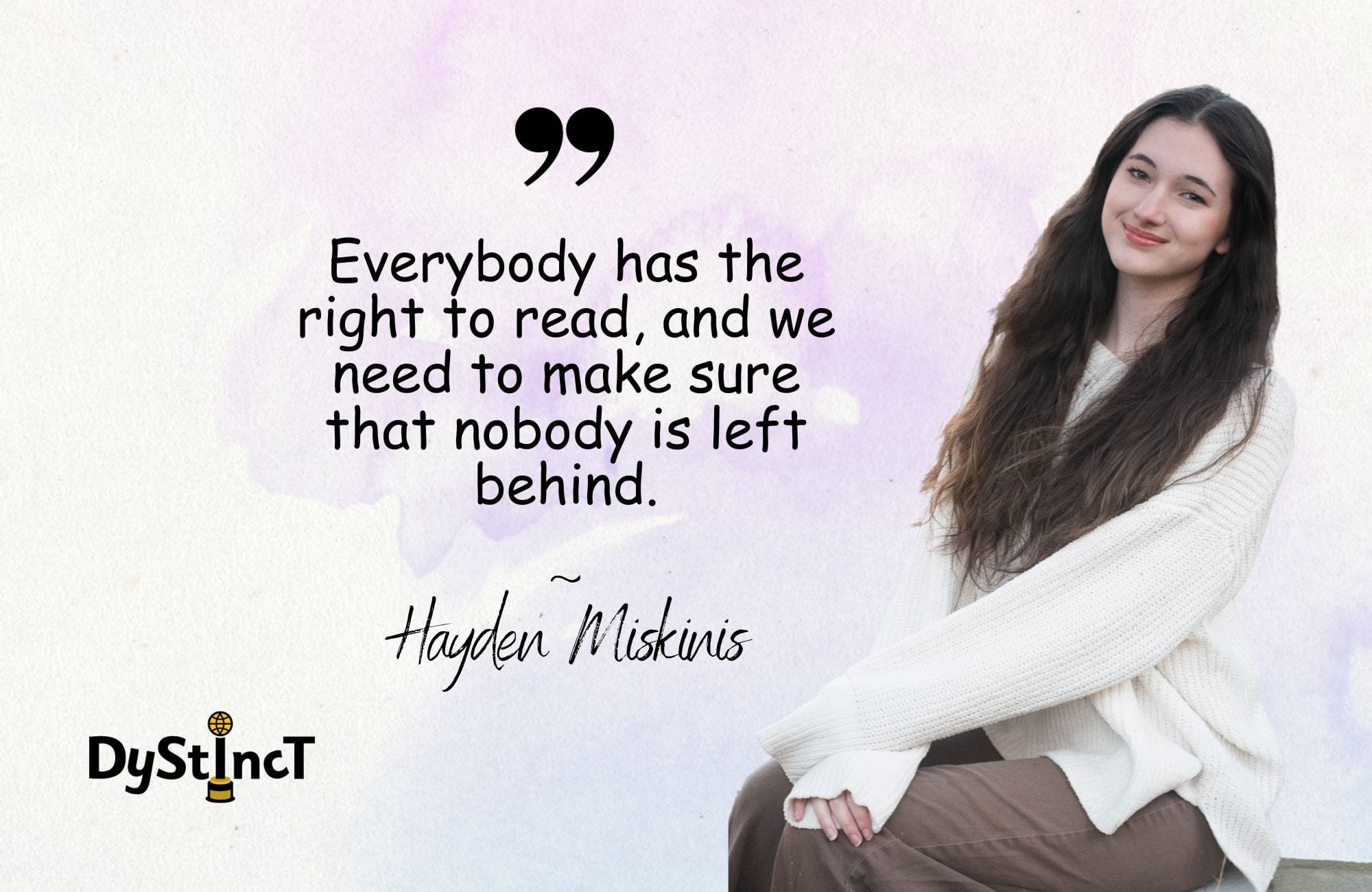
Hayden Miskinis is an 11th grader who began getting interventions in 4th grade. Up to that point, she could not read, but after two years of interventions, she went on to become a strong reader and a skilled writer. When she was in 7th grade, Hayden wrote an essay about her challenges with dyslexia that was published in The New York Times. She is now an advocate for students with dyslexia and an honors student. Hayden is currently illustrating a book, Leena and The Thinking Tree, about a young girl who is struggling with the challenges of dyslexia. When she's not drawing or advocating, Hayden is training in a pre-professional ballet program where she trains in the Vaganova technique.
Extracts from Dystinct Magazine
Extracts from Dystinct Magazine






